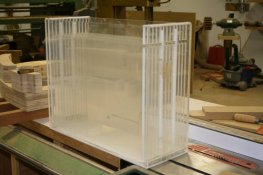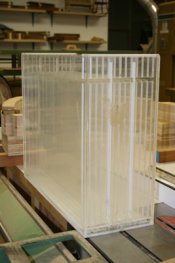shicks5319
Member
I have been washing my prints in a fish tank which has limited my washing capacity to 11X14.
While in the local photog store here in Alb. NM, I was introduced to a used 16X20 print washer out in the back room. After a little haggle this washer found itself in the back of my truck on the home.
I have no idea what kind this is or how to operate it. There was no plumbing with it and no directions.
I am wondering if any of you folks can recognize what brand this might be and if anybody has experience with this style.
I have attached some photos (hopefully).
There appears to be two small threaded (3/8") input holes one on each end. Additionally, there is a third threaded hole on one side which I am assuming is the drain.
Thanks for any comments you folks might have on this washer.
While in the local photog store here in Alb. NM, I was introduced to a used 16X20 print washer out in the back room. After a little haggle this washer found itself in the back of my truck on the home.
I have no idea what kind this is or how to operate it. There was no plumbing with it and no directions.
I am wondering if any of you folks can recognize what brand this might be and if anybody has experience with this style.
I have attached some photos (hopefully).
There appears to be two small threaded (3/8") input holes one on each end. Additionally, there is a third threaded hole on one side which I am assuming is the drain.
Thanks for any comments you folks might have on this washer.












